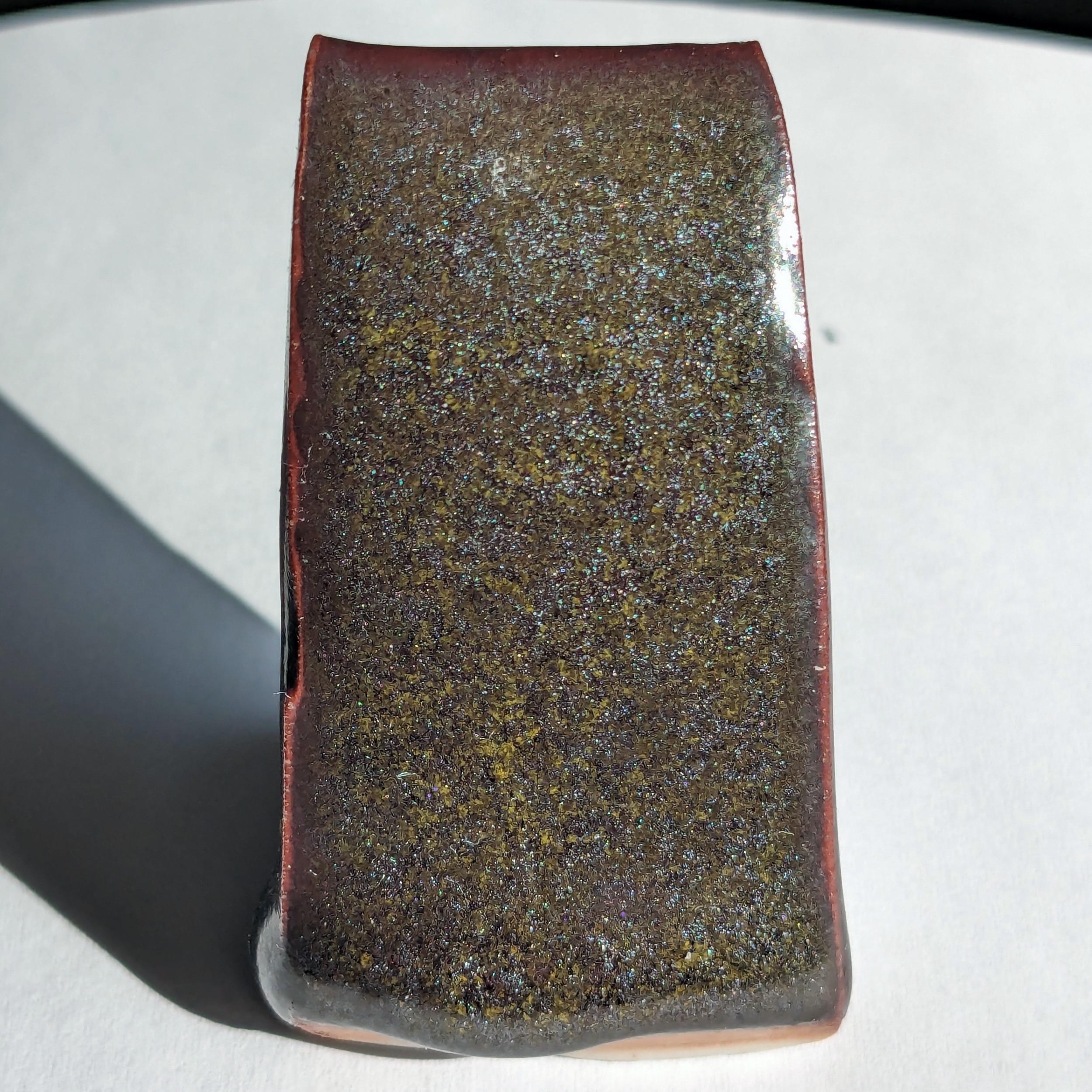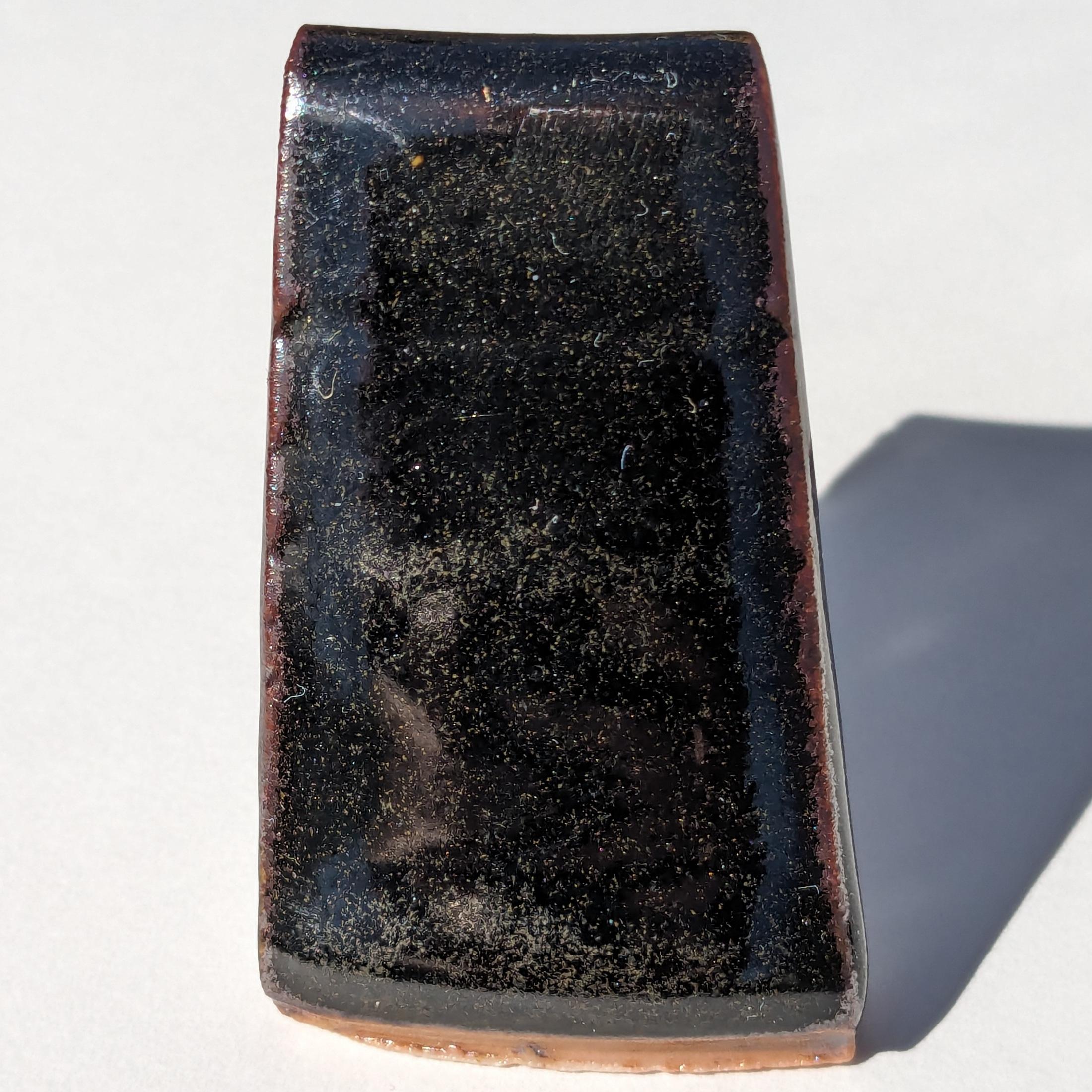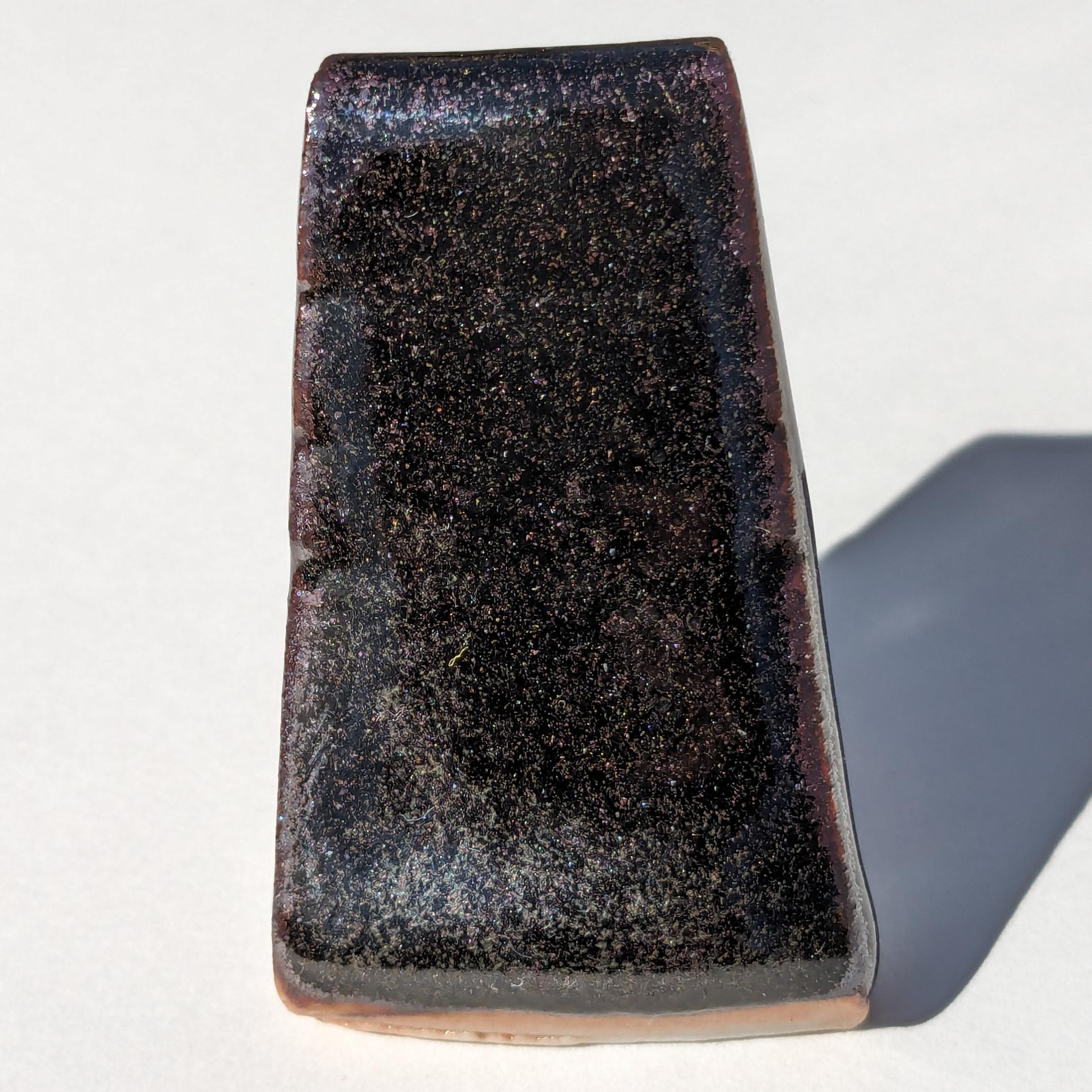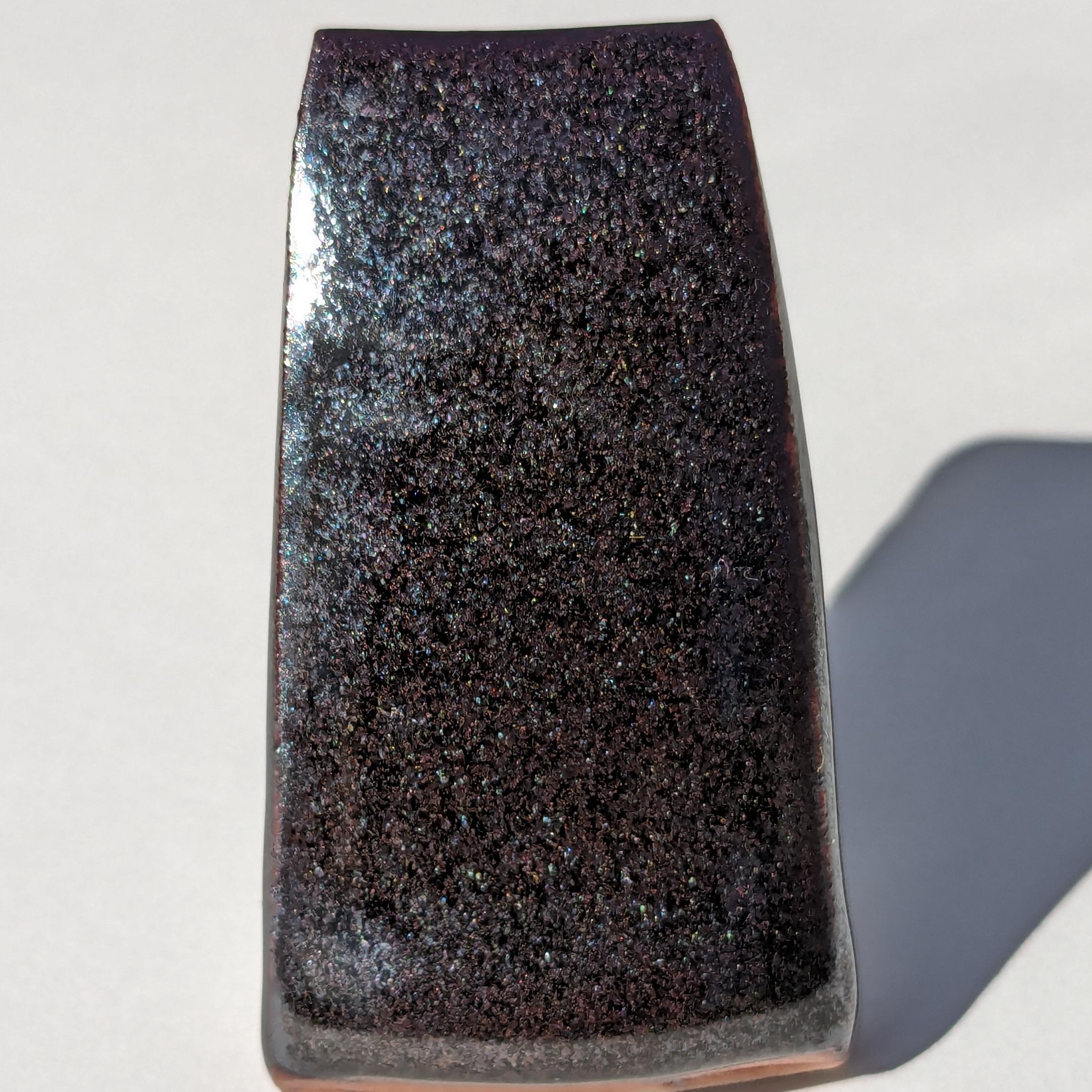
I don't want just a black glaze. Simple black glazes are quite easy to make with a high amount of iron oxide and a small amount of cobalt for a more intense black.
I want a glaze with some personality. Tenmoku glazes can grow crystals that range in color from red to yellow to green to metallic.
First, I added 10% red iron oxide to my clear glaze. This clear glaze is very stiff, so it should be able to handle iron without running (iron is a strong flux, but only in reduction).
| Material | Percentage |
|---|---|
| Ferro Frit 3134 | 22 |
| Minspar | 22 |
| Wollastonite | 8 |
| Talc | 3 |
| Grolleg Kaolin | 18 |
| Silica | 27 |
| Red Iron Oxide | +10 |
The glaze did melt well and did have some movement, but it was very controlled. The surface texture is also very pleasant to the touch.
The glaze crystallized very heavily with lots of metallic iron crystals. However, there were also a lot of yellow-green tea dust crystals. I think these crystals aren't very pleasing and want to get rid of them. These are magnesium-iron-silica crystals and the easy way to remove them is to remove the talc.
| Material | Percentage |
|---|---|
| Ferro Frit 3134 | 22 |
| Minspar | 22 |
| Wollastonite | 11 |
| Grolleg Kaolin | 18 |
| Silica | 27 |
| Red Iron Oxide | +10 |
In the second test, I removed the talc (magnesium silicate) and replaced it with wollastonite (calcium silicate) because magnesium and calcium are both RO fluxes. The tea dust crystals disappeared as expected, but the glaze also lost the heavy crystallization as a result.
The glaze breaks an ugly yellow-green when thin. Reducing the flux content will also ensure that the glaze is red to purple to brown when thin.
To bring the crystals back, I removed the wollastonite in favor of silica and kaolin to preserve the Silica-Alumina Ratio. Reducing the flux reduces the amount of iron that can stay dissolved in the glaze as it cools, increasing the number of crystals.
I also adjusted the recipe in these minor ways:
| Material | High Calcium | Medium Calcium | Low Calcium |
|---|---|---|---|
 |
 |
 |
|
| Ferro Frit 3134 | 20 | 20 | 20 |
| Minspar | 20 | 20 | 20 |
| Wollastonite | 10 | 7.5 | 5 |
| EP Kaolin | 16 | 16.5 | 17 |
| Silica | 25 | 27 | 29 |
| Red Iron Oxide | 9 | 9 | 9 |
As expected, the high calcium test had the fewest crystals and low calcium had the most. Medium calcium didn't have enough crystals for me and low calcium had too much, so it looks like I'll prefer a glaze with 6-7% wollastonite.
| Material | Percentage |
|---|---|
| Ferro Frit 3134 | 20 |
| Minspar | 20 |
| Wollastonite | 6 |
| EP Kaolin | 17 |
| Silica | 28 |
| Red Iron Oxide | 9 |
Created . Updated .
Home > Q Science > QD Chemistry > Developing a Cone 6 Reduction Tenmoku